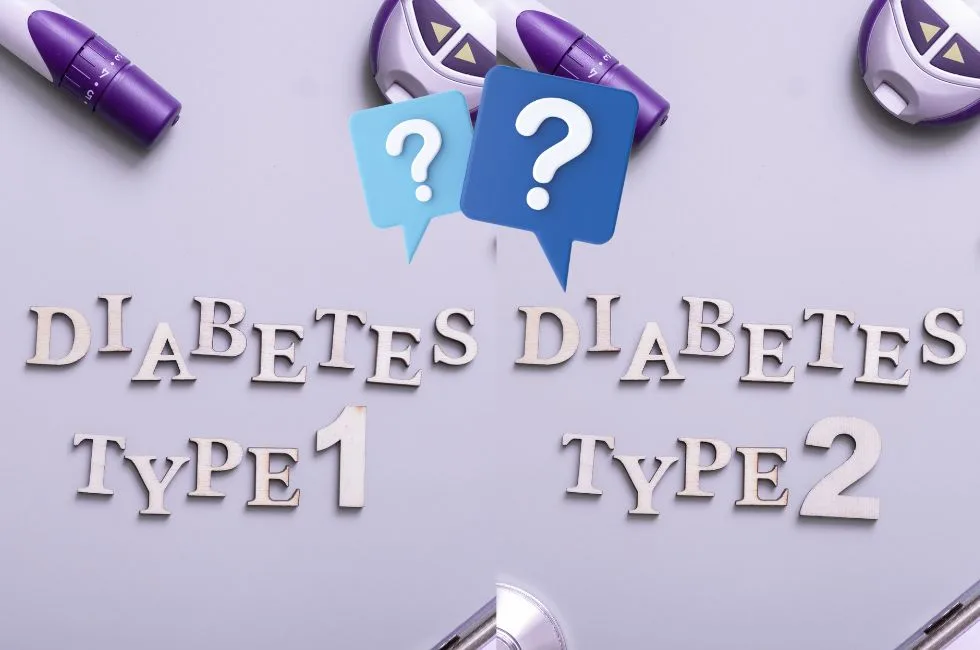Understanding whether you might have Type 1 or Type 2 diabetes isn’t a matter of mere curiosity. It’s a significant step towards taking control of your well-being. With a few simple questions about your everyday experiences, health history, and family background, you can gain valuable insights into your blood sugar levels, and what they might be trying to tell you.
The Diabetes Quiz: Type 1 or Type 2?

Curious about where you stand with diabetes? Sometimes, the answers are just a few simple questions away.
Simple Questions to Guide You
Instructions: Answer each question to the best of your ability.
Age Group:
- Are you under 40 years old?
- Are you 40 years old or above?
Family History:
- Do you have a family member with Type 1 diabetes?
- Do you have a family member with Type 2 diabetes?
Body Weight:
- Are you of normal weight or underweight?
- Are you overweight or obese?
Symptoms:
- Have you experienced increased thirst and frequent urination?
- Have you experienced unexplained weight loss (more common in Type 1)?
- Do you have areas of darkened skin, particularly around neck and armpits (a sign often associated with Type 2)?
Physical Activity:
- Do you engage in regular physical activity?
- Are you generally inactive?
Blood Pressure:
- Do you have high blood pressure or have been told you have high blood pressure?
- If applicable, did you have gestational diabetes during pregnancy?
Autoimmune Conditions:
- Do you have other autoimmune conditions? (Type 1 diabetes is an autoimmune condition)
Response to High Sugar Meals:
- How do you feel after a high sugar meal? (Feeling very fatigued after eating could be a sign of Type 2 diabetes)
Scoring:
- If you answered ‘Yes’ mostly to questions associated with under 40 years of age, normal or underweight, sudden weight loss, and autoimmune conditions, these are more commonly associated with Type 1 diabetes.
- If your ‘Yes’ answers are mostly associated with being over 40, overweight or obese, darkened skin areas, high blood pressure, and feeling fatigued after high sugar meals, these could indicate Type 2 diabetes.
Important Reminder: This quiz is for informational purposes only and is not a substitute for professional medical advice, diagnosis, or treatment. Always seek the advice of your physician or other qualified health provider with any questions you may have regarding a medical condition.
The Difference Between Type 1 and Type 2
So, what sets Type 1 apart from Type 2? Type 1 diabetes is like having a broken key; your body can’t produce insulin at all. It’s usually discovered early in life and requires insulin administration from the get-go.
On the flip side, Type 2 diabetes is like having a key that’s starting to get a bit worn out; your body doesn’t use insulin properly, known as insulin resistance. This type can develop at any age and is often associated with lifestyle factors, though genetics can play a role too.
Understanding these differences is crucial because it affects everything from your management plan to your medication. And while Type 1 diabetes can’t be prevented, you can certainly lower your risk of developing Type 2 by keeping an eye on your blood pressure, maintaining physical activity, and managing your blood sugar levels.
Warning Signs and Symptoms
The symptoms of diabetes can be subtle and easily overlooked. Here’s what to keep an eye out for:
- Increased thirst and urination
- Sudden weight loss or gain
- Unexplained fatigue
- Blurry vision
- Slow-healing sores or frequent infections
- Tingling or numbness in your hands or feet
Why Knowing the Signs is Crucial
Ignoring these signs can lead to serious complications. Left untreated, diabetes can damage your heart, blood vessels, eyes, kidneys, and nerves. Knowing the symptoms not only puts you in a better position to get timely treatment but also empowers you to manage your condition effectively.
Risk Factors and Prevention
Wondering if you’re at risk of developing diabetes? It’s not just a random game of chance. Certain factors can increase your likelihood of developing this condition.
What Puts You at Higher Risk?
Several risk factors can raise your chances of developing diabetes, such as:
- Family history of diabetes
- Being overweight or having obesity
- Physical inactivity
- High blood pressure
- Having prediabetes
- Age, particularly if you’re over 45 years old
Can You Reduce Your Risk?
Here’s some good news! You have the power to influence many of these factors. A healthy diet, regular physical activity, and maintaining a healthy weight can markedly decrease your risk of developing type 2 diabetes. And if you’ve been told your blood sugar is high, these steps are your first line of defense in preventing diabetes from developing.
Living with Diabetes
So, you’ve taken the quiz and talked to your doctor—what’s next? Whether you’ve been diagnosed with Type 1 or Type 2 diabetes, the road ahead is about management and adaptation, not just treatment.
Managing Your Diabetes
Living with diabetes means making some changes, but they’re changes that can lead to a healthier, fuller life:
- Monitor your blood sugar levels regularly to stay on top of your condition.
- Maintain a balanced diet, focusing on foods low in sugar and high in fiber.
- Regular physical activity can help manage blood sugar levels and reduce insulin resistance.
- Medication or insulin therapy might be necessary, as prescribed by your doctor.
- Regular check-ups are essential to prevent complications.
Ready to take charge of your health? Share your experiences or questions below. Let’s keep the conversation going and support each other in living our sweetest, healthiest lives!




